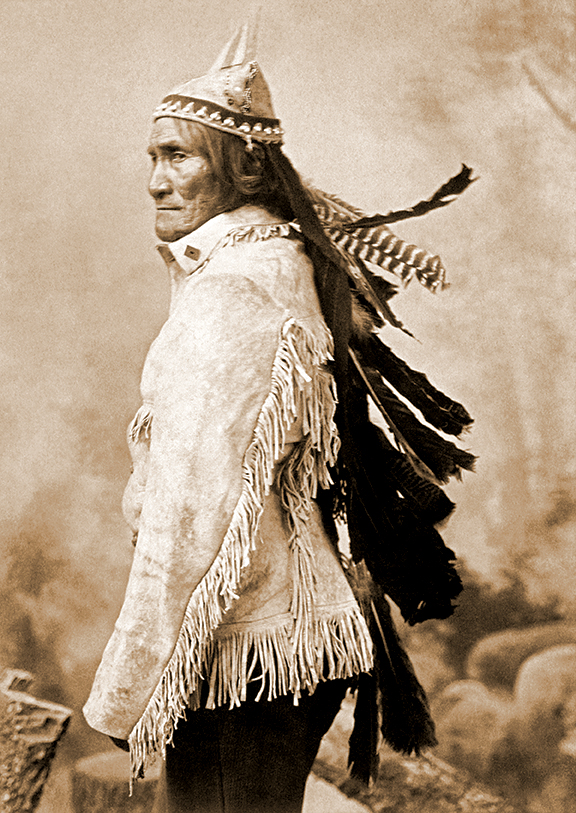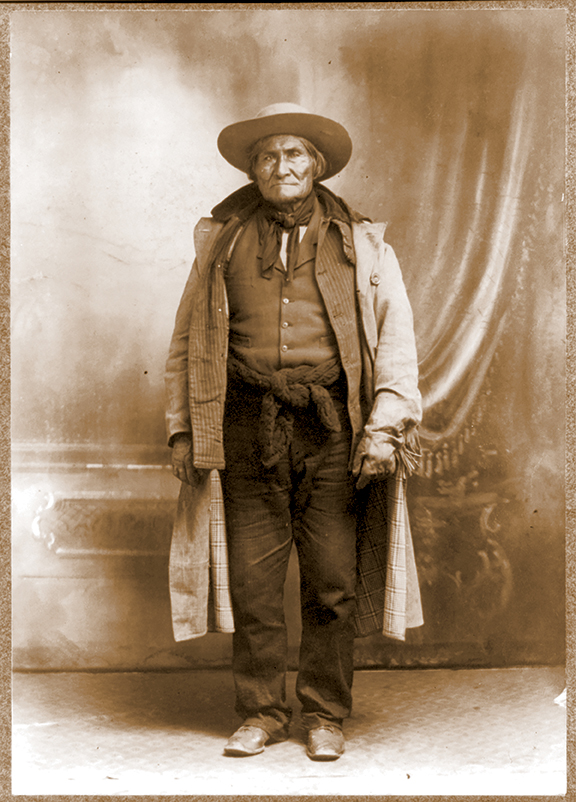Geronimo

It is easy to drive through the deserts of Eastern Arizona and imagine things as they were hundreds of years ago. The vast desert landscape dotted with cactus and yucca plants can rise unexpectedly to mountains full of wildlife and rock outcrops towering over the roads and desert pine trees. I have looked up at the ridges, thinking it would not be so hard for the Apache to still live free in those lands. As harsh as the landscape is now, what was it like to grow up there then? How did someone with no formal education, no electricity and no motorized transportation become a hero to his own people, and a legend in American history? Who was Geronimo?
Geronimo was a Chiricahua Apache. The Chiricahua people were native to North America. They were nomadic people who traveled and lived in the Southwest United States. They were great warriors. As European settlement came north through Mexico and later from the east in the United States, these people became known as the fiercest fighters. Through fear of their great warriors and the desire to conquer them, they became hunted by both the Mexican and United States armies.
Geronimo was born sometime around 1829 in Arizona. His name was Goyahkla. When he was 17 he became a warrior and went on many raids. He married a girl named Alote and they had three children. In a Mexican raid on his village many people were killed including his whole family. Geronimo swore at that time to protect his people and get revenge. He led many raids and the soldiers were amazed by his skill and they began to be afraid of him. His raids continued as he led a band of Apaches, attacking wagon trains, ranches, and other targets. He became legendary to both the Mexican and United States Armies.
Geronimo and his band of Chiricahua Apache escaped captive life on reservations a number of times. They did not like being forced to stay in one place. Stories spread about the Apache warrior. He became known as “the most dangerous Indian alive”. His capture became a goal of the United States Government. The last time Geronimo was captured was in 1886. He became a U.S. prisoner of war. For a time he was shown at fairs and in Wild West shows as the “last savage”. His life ended at Fort Sill, Oklahoma, in 1909 at the age of 79. He is buried at the Beef Creek Apache Cemetery in Fort Sill.

There is some mystery and intrigue surrounding Geronimo’s burial site. Could his remains have been stolen by the Apache and moved secretly back to his native lands? Did some group called the Skull and Bones Society steal his skull? Those are questions that may never be answered. What remains is a legend of a great warrior both loved and feared by his own people and the settlers of the American Southwest.



